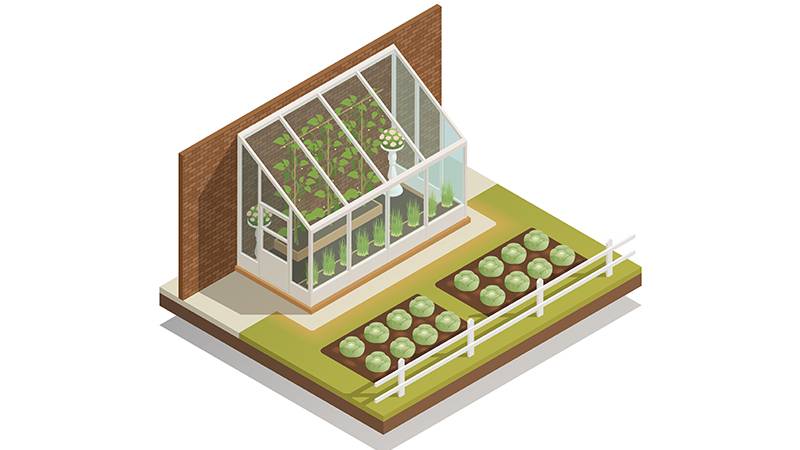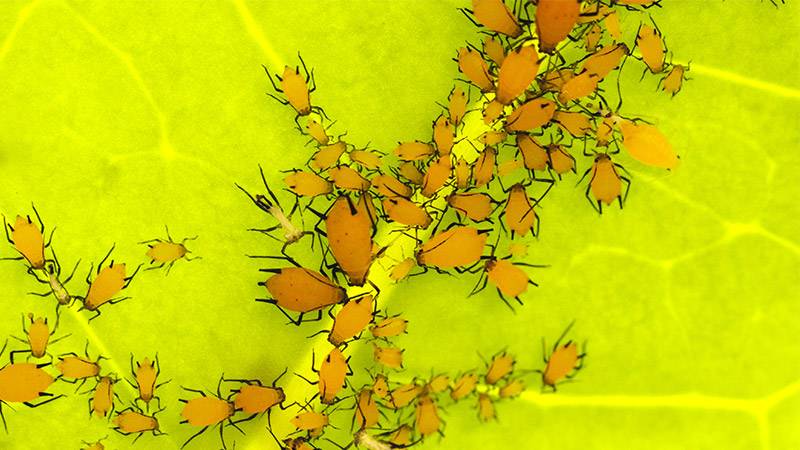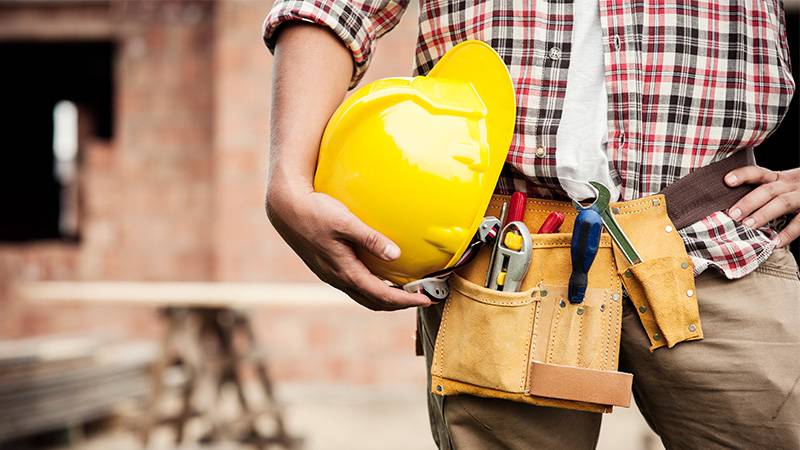Attached greenhouses merge home and garden, offering convenience and charm. Dive into their benefits, challenges, and maintenance for optimal growth.

Gardening, over the years, has evolved beyond mere hobbyism, and greenhouses have stood at the forefront of this evolution.
Amidst the myriad greenhouse designs, there's been a growing interest in having a greenhouse attached to a house. Such designs not only amplify aesthetic appeal but also promise convenience, merging the beauty of nature with our everyday living spaces.
Whether you're contemplating the transition from traditional gardening to the enchanted realm of attached greenhouses, or simply curious about their allure, this guide promises to shed light on every facet of this captivating home addition. Welcome to the world of attached greenhouses!
What are Attached Greenhouses?
An attached greenhouse, as the name suggests, is a structure that extends directly from a building, typically a home, serving as a bridge between indoor living and outdoor cultivation.
Unlike detached greenhouses that stand alone, these greenhouses offer a seamless integration with the main building, enhancing both accessibility and energy efficiency.
Historically, the concept of attached greenhouses traces its origins back to the Victorian era, when orangeries—spaces to grow oranges and other citrus plants—were attached to affluent homes to display wealth and gardening prowess.
Over time, as greenhouse construction and designs evolved, the idea of merging a greenhouse with one's living space became increasingly popular. With the progression of time, these spaces transformed from mere status symbols to functional, eco-friendly additions for plant enthusiasts.
Today, attached greenhouses, whether made of polycarbonate, glass, or other materials, cater to a variety of needs, from nurturing delicate tropical plants to establishing a home-based herb garden.
In essence, an attached greenhouse provides the best of both worlds: the controlled environment of a greenhouse combined with the convenience and energy-saving benefits of being directly linked to a dwelling.
As greenhouse orientation and material choices have become more sophisticated, the allure of having a greenhouse attached to a house continues to grow.
Benefits of Attached Greenhouses
The modern living space evolves, merging functionality with aesthetics. Among these developments is the rise in popularity of attached greenhouses, blending nature's touch with home comfort.
If you've ever wondered about the advantages of having a greenhouse attached to your house, let’s explore the multifaceted benefits they bring.
Energy Efficiency and Heating
Central to the appeal of attached greenhouses is their incredible energy efficiency. Sharing a wall with your main dwelling means a mutual heat exchange. On cold days, your home's warmth radiates into the greenhouse, ensuring plants get their required warmth without relying too heavily on external heaters.
On sunny days, the greenhouse, acting like a solar collector, can dissipate warmth to adjacent rooms in the home, slightly reducing home heating needs.
Convenience and Accessibility
But energy efficiency isn’t the sole advantage. The sheer convenience of an attached greenhouse is unmatched. Rain, snow, or shine, accessing your green oasis is as simple as walking through a door. This ease translates to more frequent care, fostering healthier plants and timely interventions.
Additionally, the seasons no longer dictate your gardening schedule. Whether you're tending to summer tomatoes or nurturing winter herbs, the proximity and controlled environment of your greenhouse make year-round cultivation a reality. This continuity allows gardening enthusiasts to experiment with diverse plants, irrespective of the season.
Space Utilization
Urban living often comes with space constraints. Enter attached greenhouses – the perfect solution for limited yard space. Instead of a standalone structure occupying significant ground area, these greenhouses meld with your home, utilizing areas like patios, balconies, or even walls, turning them into lush, green niches.
For homeowners, this means every square foot counts. Transforming even the most compact of spaces into thriving green habitats, these greenhouses provide an opportunity to engage with nature without the need for expansive grounds. Moreover, they enhance the aesthetic value of your home, acting as living art pieces that evolve with each season.
To sum up, attached greenhouses are more than just a gardening trend. They are a testament to sustainable living, a nod to energy efficiency, a convenience unparalleled, and a brilliant solution to space constraints. As we become more environmentally conscious and look for ways to harmonize our living with nature, attached greenhouses stand out as a beacon of green innovation.
Disadvantages of Attached Greenhouses
While the allure of attached greenhouses is undeniable, it's crucial for potential greenhouse owners to be aware of the challenges they might face. Being informed ensures that you can make the best decisions for your home and garden. Let's delve into some of the potential pitfalls of having a greenhouse attached to your house.
Potential for Overheating
Attached greenhouses, especially those facing the sun's trajectory, can become incredibly warm. If not properly ventilated, this heat can adversely affect both the plants inside the greenhouse and the adjacent rooms of the home:
Greenhouse Effects: Plants can wilt or suffer from heat stress. Overheating can also evaporate moisture rapidly, leading to a need for more frequent watering.
Home Implications: An overheated greenhouse can raise the temperature of adjacent rooms, causing discomfort and possibly increasing air conditioning costs during warmer months.
Proper ventilation systems, shade cloths, and timely opening of windows can help manage and mitigate these concerns, but it's a factor that requires consistent monitoring.
Pests and Disease Concerns
With an attached greenhouse, there's a thin line between the plants' habitat and your living space. This proximity brings about a risk: pests. If not adequately managed, these pests can transition from the greenhouse into your home. Here are some common culprits:
- Aphids: Tiny insects that can multiply rapidly and damage plants.
- Spider mites: These microscopic pests thrive in warm conditions, causing discoloration and harm to plants.
- Whiteflies: They suck sap from plants, leading to weakened plants and potential viral infections.
- Fungus gnats: Their larvae can harm the plant roots, affecting their growth.
Regular inspections, natural predators, and eco-friendly insecticides can help manage these pests, but the risk, however minimal, remains.
Construction Challenges
Building a greenhouse attached to a house isn't as straightforward as it might seem. Here are some challenges to consider:
Architectural Compatibility: The greenhouse design needs to harmonize with the home's existing architecture. This requires careful planning and, often, customized designs.
Foundation and Structural Concerns: Depending on soil type and home foundation, additional groundwork might be needed to support the greenhouse, adding to the construction costs.
Watering Systems: Proper drainage and watering systems must be in place to avoid water damage to both the greenhouse and the home.
Permits and Regulations: Many localities have zoning laws and building codes. Acquiring the necessary permits and ensuring that the greenhouse construction adheres to these regulations can be time-consuming.
Despite these challenges, with proper planning, expert guidance, and a bit of patience, constructing an attached greenhouse can be a rewarding endeavor.
While the benefits of attached greenhouses are numerous, it's essential to approach the idea with a comprehensive understanding. Awareness of potential disadvantages ensures that you can enjoy the lush beauty of your greenhouse without unwelcome surprises. With the right precautions and preparations, you can navigate these challenges and enjoy a harmonious blend of home and nature.
Building Your Own Attached Greenhouse
Taking the leap to build your own attached greenhouse can be thrilling and a little daunting. The good news? With the right guidance, it's a journey that brings immense satisfaction and can be smoother than anticipated.
If you've been intrigued by the benefits of having a greenhouse attached to your house but unsure about the how, you're in the right place. Let’s delve into a comprehensive guide to help you bring this dream to fruition.
Planning and Design
Size and Plant Type: Before anything else, you must decide the size of your greenhouse. Consider the space available, the type of plants you wish to grow, and your long-term gardening aspirations.
Location: Next, select the location. This decision often depends on the greenhouse's primary purpose. If you aim to start seedlings or grow tropical plants, the space should get ample sunlight. However, for propagating plants or keeping potted plants, partial shade might be more beneficial.
Orientation to Sunlight: Sunlight is the lifeblood of plants. The orientation of your greenhouse can drastically impact the amount of sunlight it receives. In most temperate zones, a southern exposure ensures consistent sunlight throughout the day.
Materials
Choosing the right materials for your greenhouse will define its look, functionality, and longevity.
Glass: Traditional and offers clarity and aesthetic appeal. However, it can be pricier and might not retain heat as effectively as other materials.
Polycarbonate: Twin-wall polycarbonate panels offer excellent insulation, protect plants from direct sunlight, and are generally more durable than glass.
Polyethylene: This is a common, more affordable choice but might need replacement every few years.
Shade Cloth: Perfect for areas that receive intense sunlight. They help in controlling the amount and intensity of sunlight that reaches the plants.
Construction Steps
Building a greenhouse attached to your house is a methodical process. Following a step-by-step guide can make the process smoother:
- Laying the Foundation: Start with a solid foundation, preferably using concrete, treated wood, or galvanized metal. Ensure it's level and stable.
- Building the Frame: Depending on the material chosen (wood, PVC, metal), construct a sturdy frame. Attach it securely to the main building.
- Setting Up Roofing: Slope the roof slightly to aid water runoff. This prevents water stagnation and potential damage.
- Installing Panels: Attach the chosen panels—be it glass, polycarbonate, or polyethylene—to the frame. Ensure there are no gaps to prevent drafts and pests.
- Setting Up Ventilation: Incorporate vents at the roof's peak and sides for optimal air circulation, crucial for plant health and temperature regulation.
- Installing Doors: Ensure easy access with a well-fitted door. Consider insect-proof netting if pests are a concern.
- Setting Up Watering Systems: Depending on the plants' needs, set up drip irrigation, misting systems, or simple watering solutions.
- Temperature Control: Consider adding a shade cloth, fans, or heaters as per your geographical location and plant requirements.
- Final Touches: Add shelving, workbenches, and perhaps a sitting area to enjoy your green oasis.
Building your own attached greenhouse is no small feat, but the rewards—fresh produce, lush greenery, and a serene space—are truly unmatched. With careful planning, the right materials, and a dash of enthusiasm, you can create a sanctuary that not only nurtures plants but also rejuvenates your spirit.
Best Practices for Attached Greenhouse Maintenance
A dream of many gardening enthusiasts, an attached greenhouse is a splendid addition to any home. But, like all good things, it requires care and dedication. Proper maintenance ensures your plants grow in a healthy environment and can significantly prolong the life of the greenhouse structure itself.
Let's delve into some pivotal practices to ensure your attached greenhouse remains a thriving paradise.
Regular Cleaning and Ventilation
An unclean greenhouse is a breeding ground for diseases and pests. Plant debris, unchecked moisture, and lack of ventilation can lead to mold growth, negatively impacting plant health.
Cleaning Regimen
- Floors and Paths: Sweep them regularly to prevent algae buildup. Algae can make paths slippery, posing a danger. Consider using greenhouse-friendly disinfectants occasionally.
- Glass or Panels: Dust and grime can obstruct sunlight. Clean the panels inside and out at least twice a year. Use a soft brush and lukewarm water with a mild detergent.
- Shelving and Benches: Ensure they are free from plant debris. Regularly inspect for any signs of rust or rot, especially if you're using wooden benches.
Ventilation
Proper ventilation is crucial for temperature control and maintaining air quality. Ensure vents are open during warm days to allow hot air to escape and enhance air circulation. For automated systems, regularly check the controllers and sensors to ensure they're functioning optimally.
Pest Control
No matter how cautious we are, pests can make their way into our greenhouses. Their presence is not just a nuisance; they can hamper plant growth and even destroy your cherished plants.
Natural Deterrents
- Companion Planting: Some plants act as natural repellents. For instance, marigolds deter aphids and nematodes, while basil can repel mosquitoes and flies.
- Neem Oil: A versatile organic solution, neem oil can deter a wide variety of pests, including aphids, spider mites, and even fungi.
- Beneficial Insects: Introduce natural predators to the pest population. Ladybugs are voracious aphid eaters, and predatory mites can help manage spider mite populations.
- Diatomaceous Earth: This naturally occurring substance can be sprinkled on the soil and plants to deter pests. It's especially effective against crawling pests.
When to Use Them
At the First Sign: Don’t wait for a full-blown infestation. At the first sign of pests, employ natural deterrents.
Regularly: Even if there's no visible sign of pests, it's a good practice to occasionally use preventative measures, especially during seasons known for pest proliferation.
After Introducing New Plants: Always quarantine new plants before introducing them to your greenhouse. Once you’re sure they're pest-free, you can move them in, but use deterrents as a precaution.
In essence, maintaining an attached greenhouse is an ongoing process that demands vigilance and commitment. With regular cleaning, adequate ventilation, and smart pest control measures, your greenhouse can remain a sanctuary for plants and a peaceful retreat for you, year after year.
FAQ
A greenhouse attached to a house is called a "lean-to greenhouse" or "home-attached greenhouse." It shares one wall with the main building, optimizing space and allowing easy access.
Yes, you can build a greenhouse attached to your house. Ensure proper planning for orientation, ventilation, and structural support, and check local building codes and regulations before construction to ensure compliance.
Attaching a greenhouse to a house offers benefits like easy access, shared heating, and space utilization. However, it requires careful planning for ventilation and pest control. Before deciding, consider factors like purpose, available space, and maintenance commitment. Always check local building codes and regulations.
The cost to attach a greenhouse to your house varies based on size, materials, and location, ranging from $3,000 for basic setups to $30,000 or more for larger, luxury versions. Factors like foundation type, glazing material, and local labor rates can significantly influence the final price. Always seek multiple quotes.
Attached greenhouses can risk overheating if not properly ventilated. They may introduce pests from the greenhouse to the home and require specialized construction. Additionally, their fixed position limits orientation flexibility, potentially impacting optimal sunlight exposure for plant growth.
Conclusion
Building and maintaining a greenhouse attached to a house is a fulfilling endeavor, promising both joy and challenges. Remember, proper orientation ensures maximum sunlight, while thoughtful material choices, like polycarbonate or glass, can align with your budget and aesthetic. Maintenance is paramount — regular cleaning and vigilant pest control can keep your sanctuary thriving.
Most importantly, every greenhouse is unique, mirroring the individuality of its gardener.
As you embark on this greenhouse gardening journey, remain curious, stay informed, and continuously adapt. And don't stop here! Dive deeper into the world of greenhouse gardening and uncover more secrets to nurture your green oasis.









If you could provide a concise summary or the key takeaways from the blog post about attached greenhouses from the link you’ve shared, I’d be more than happy to assist you in crafting a short comment relevant to the topic.